Some of the links in this post may be affiliate links.
I just poured my heart and soul out into generating these top 59 houseplant care hacks and tips for you. These simple tips will make it easy for you to take care of plants at home. Without further ado, let’s get started on these houseplant tips!
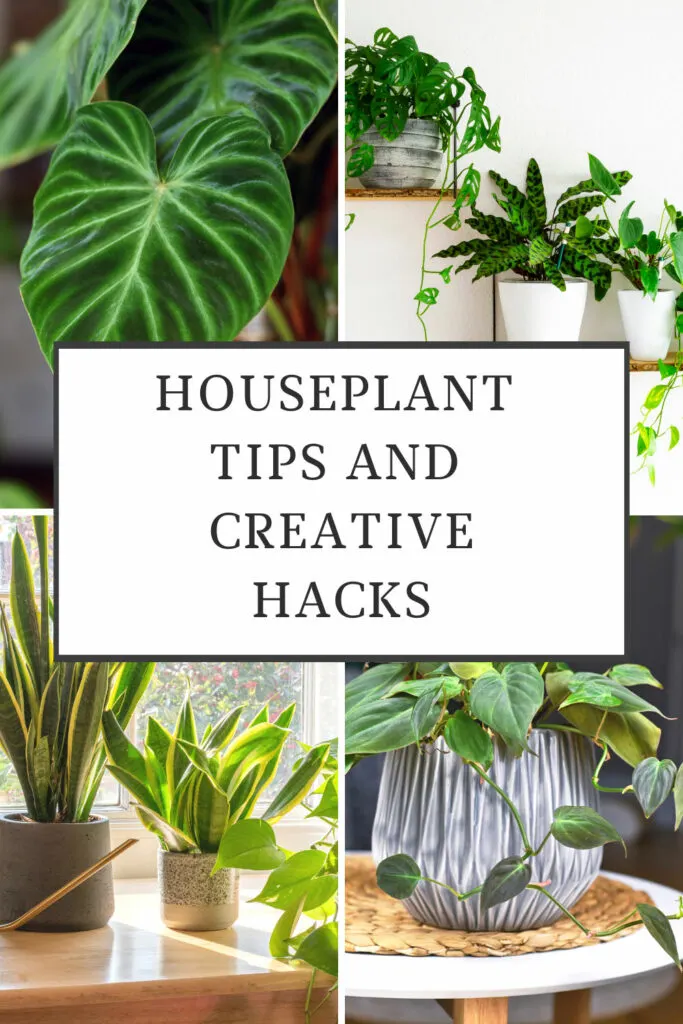
Tip #1: No ice cubes! I really cringe every time I go to the grocery store or a hardware store and see the line of plants where you “just add ice.” Folks, this is a marketing gimmick.
You’ll see this with moth orchids and other types of plants as well. Unless you see a monkey with a popsicle stick, don’t use ice.
Water your plants the old fashioned way. They will thank you! Check out my YouTube video showing how I water all my moth orchids.
Tip #2: A Clean Plant is a Happy Plant. Do you have a dusty houseplant? Sure, we all do! If you expect your plant to be happy, it’s a good idea to clean those filthy, dusty leaves.
Give them a good rise in the shower, or wipe them off with a sponge or moist paper towel.
Tip #3: Read a good houseplant book, or two, or three… There is so much information out there on the Internet. Some of it is true and some of it is not! Information on the Internet related to houseplant care is abundant, and also confusing.
Why not learn the old fashioned way, from a trusted source? Check out my blog post on some of my favorite houseplant books.
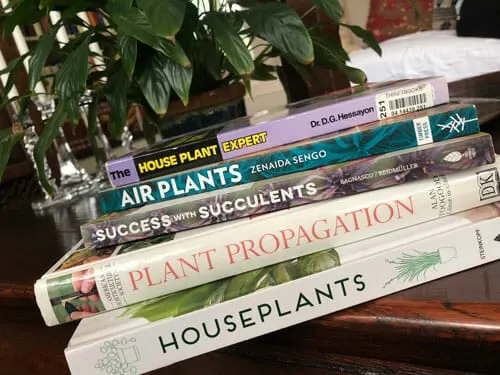
Tip #4: Join a plant society! Never underestimate the power of crazy plant people! You will find many characters in plant societies, and there seems to be a society for everything.
Check out the American Orchid Society for a wealth of orchid information. If begonias are your thing, check out the American Begonia Society. If you have an aroid fetish, consider joining the International Aroid Society.
Crazy plant people unite! That way you can swap plants and geek out with other plant crazies like yourself.
Tip #5: Use a turkey baster to remove excess water. Did you water your large floor plant and now you have a lot of water in the tray underneath but the plant is too big and heavy to pick up?
Use a turkey baster to suck up the extra water so your plant isn’t sitting in water! Plants sitting in water will be prone to root rot, so take out that turkey baster.
Tip #6: Let your succulent and cactus cuttings air dry before propagating. When you make a succulent or cactus cutting, you need to let them air dry for a few days and the cut needs to callous over.
This will help prevent the cutting from rotting when you are trying to root it. Check out the interview I conducted with an expert on propagating succulents.
Tip #7: Repot your plant. Is your pot full of roots? Maybe roots are coming out of the drainage holes? Perhaps there is a hard mass of roots on the surface?
Have you had your plant a long time and never took it out of its nursery pot? It might be time for you to repot! To know when and how to repot, check out my blog post on repotting a houseplant.
Tip #8: Fertilize! In nature, plants have a constant stream of nutrients from decaying plant and animal matter. In the home, your potted plant only has the soil in its pot.
The nutrients will be used up rather quickly in a pot. Some potting mixes have added fertilizer and it may tide your plant over for 6 months or so.
Then after that, it is our job to make sure we fertilize our plants during the growing season. Check out my fertilizing blog post for all the fertilizers that I like using for various plants.
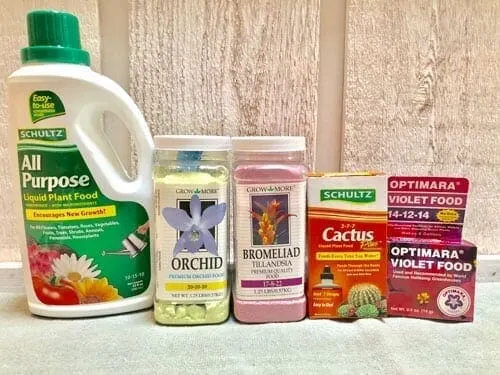
Tip #9: Amend your potting mixes. I rarely use any potting mix straight out of the bag anymore. Indoor plants need excellent drainage. And it’s not just succulents that need excellent drainage.
I like using Miracle Gro potting mix for most houseplants. For succulents and cacti, I like the Miracle Gro cactus, palm and citrus mix. I’ll start with these, and add at least 1 part perlite or pumice to 3 parts potting mix in order to provide additional aeration in the potting mix.
This will also help prevent soil compaction. You will be shocked at how much this improves the soil drainage!
Tip #10: Inspect your houseplants for pests at the time of purchase. Don’t skip this! Carefully inspect any plant before you purchase it. Look for any indication of pests such as white, cottony mealybugs on the leaves or stems, spider mite webs, fungus gnats flying around the plant, etc.
If you do notice any pests, don’t buy the plant! Time to visit another nursery.
Tip #11: Summer your houseplants outdoors. The great outdoors can work miracles for your houseplant that has been cooped up indoors.
Fresh rainwater, air circulation, increased light, and the temperature gradient between day time and night time will quickly whip any plant into shape. Check out my blog post on how I prepare my houseplants for their visit outdoors.
Tip #12: Houseplant care hack while your are away on vacation. Do you become a nervous wreck every time you go on vacation and you have to worry about who will care for your plants?
You may not have to have anyone come to your home! Check out my vacation houseplant care hack blog post to sustain your plants while you are gone.
Tip #13: Change your water frequently for water propagation. Are you trying to root your houseplant cuttings in water? Be sure that you change the water frequently to keep it fresh and clean and to increase your chances of rooting. It also replenishes oxygen in the water which is critical.
Aim for at least once a week, or more frequently if you notice that the water is dirty or cloudy.
Tip #14: Use rooting hormone if you are soil propagating your houseplants. You don’t absolutely NEED to, but it can greatly speed up the process!
Tip #15: Stop misting because you think it will increase humidity…because it won’t! You can certainly whip out the mister for other purposes, but if your goal is to increase humidity, you’re wasting your time. It will give you a good forearm exercise though.
Tip #16: Group plants together to increase humidity. Did you know that if you group plants together, they will increase their own humidity? Plants transpire water through their leaves, so by grouping them closely together, they’ll create their own microclimate of higher humidity.
Tip #17: Just get a humidifier to increase humidity. Duh, right? I purchased a new humidifier for my sunroom that I absolutely LOVE. Check out my humidity blog post for all the details on this humidifier as well as on the humidity topic in general.
Tip #18: Water your plants thoroughly. If you are adding just a little water each time you water, you are not watering the proper way. Of course, there are many factors in houseplant care and watering is just one of the topics that needs to be correct.
Learn about the top watering myths of watering houseplants and how you really should be watering.
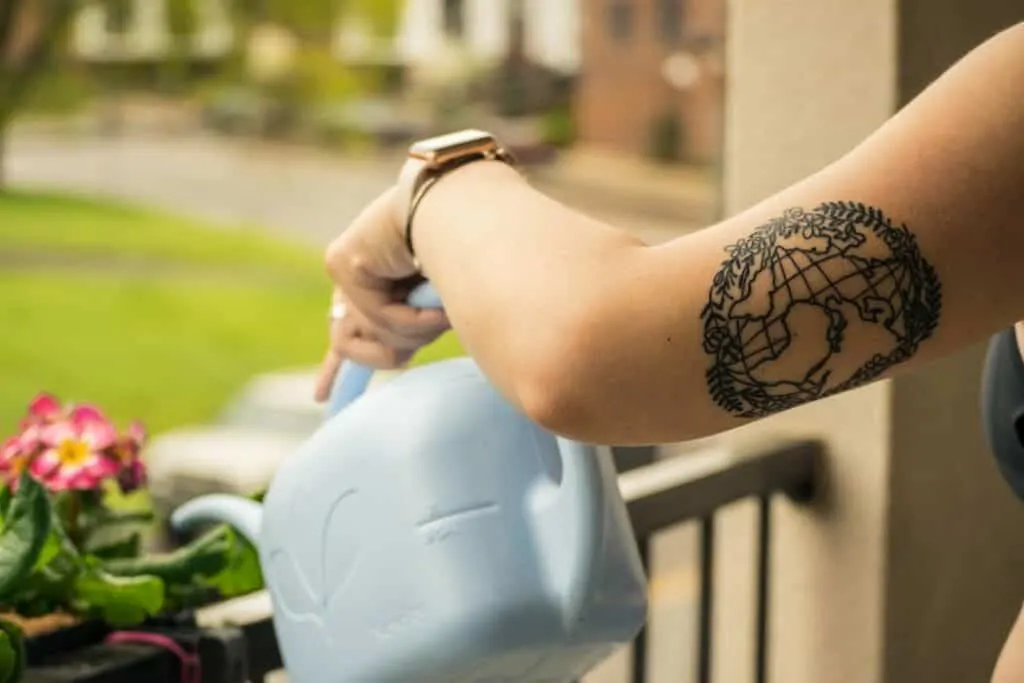
Tip #19: Loosen the root ball when you repot a plant. Have you ever simply taken a pot bound plant out of its original pot and transferred it to a bigger pot without loosening the root ball?
If so, your plant’s roots may stay that way and never grow into the new soil! You’ll need to loosen the root ball. Check out my blog post on repotting a pot bound plant for the proper procedure so your plant can thrive in its new pot.
Tip #20: Increase light. Do you have a plant that isn’t growing because it’s sitting in a dark corner of your home? Enough said. Plants need light to grow. They manufacture their own food utilizing light.
Deprive your plant of light, and deprive it of food. Deprive it of food, and the growth will be disappointing.
Tip #21: Shake those air plants! Have you ever had an air plant rot out on you? After you water your airplant (whether by misting it or soaking it), be sure to give it a good shake so excess water isn’t lodged between the leaves and cause rotting.
Check out my air plant care guide post for more information on caring for your Tillandsia plants!
Tip #22: Air layer your leggy houseplants. Do you have any larger houseplants that have gotten leggy and you wonder how on earth you will rejuvenate them? Try air layering!
This method works for lots of different plants including rubber plants, fiddle leaf figs, any Dracaena, and many more. Although it takes some time, the process is rewarding and minimizes the shock as you’re propagating your houseplant.
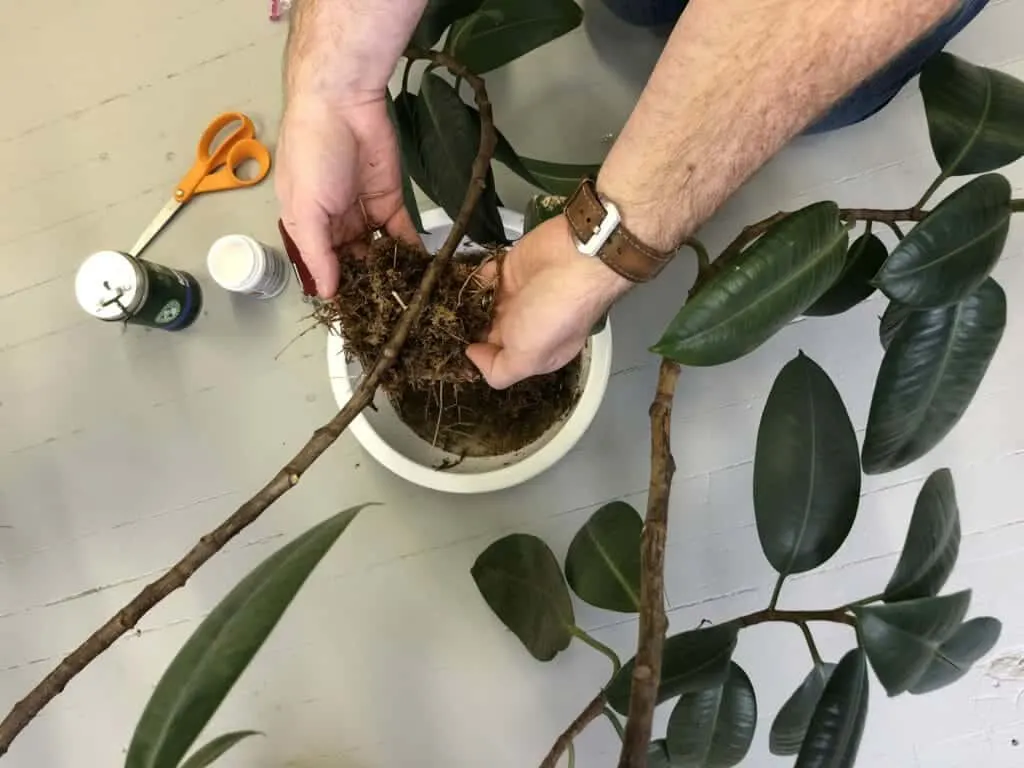
Tip #23: Stop watering by your calendar. Are you stuck in the “water once a week” philosophy? Your watering should not be dictated by your calendar.
You should water when your plant needs to be watered. If a week goes by and the surface of your soil is still moist, there is no need to water. You should be regularly checking in with your plants and monitoring the soil moisture.
I simply like to use my finger. When the surface of the soil is dry (anywhere from 1/2 inch to 2 inches depending on the pot size), then you can think about watering again.
Tip #24: Use this hack to get your Christmas cactus to rebloom. Has your Christmas cactus failed to rebloom for you? Did you know that if your Christmas cactus doesn’t receive uninterrupted darkness at night, it may not rebloom for you!
If you have a lamp or overhead light on during the evening hours, it can be deterring your plant from reblooming. For more details, read my Christmas cactus care blog post so you can finally learn this and other techniques to get your plant to bloom again!
This applies for Thanksgiving cactus as well.
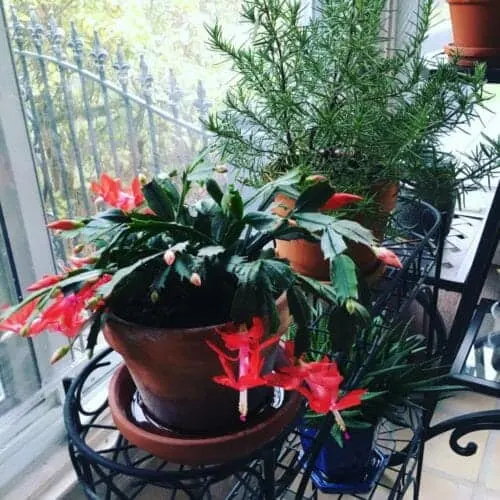
Tip #25: Can’t distinguish between a new root or new flower stalk on your moth orchid? I visually show you the difference in my orchid flower spike or root blog post, so you don’t have any false alarms!
Tip #26: You know you shouldn’t be watering again, but you can’t help yourself. If you tend to go heavy on the watering can and love watering, try switching to terra cotta pots. Terra cotta pots are very porous and dry out much more quickly than other types of pots.
Tip #27: Soak terra cotta pots before using them. Did you know that you really need to soak your terra cotta pots before using them? Soak them in warm water for about half an hour before using them.
Terra cotta already dries out quickly, so this process will help condition the pots before using them. Otherwise, they’ll dry out even more quickly.
Tip #28: Soak your orchid bark mix before using. Anytime you are using orchid bark mix to repot your orchids, soak the bark chunks in hot water for 1/2 hour before using.
You will be conditioning the bark to accept water. Otherwise if you don’t do this, water will run straight through and lose moisture very quickly.
Tip #29: Turn your plants for even growth. Is your houseplant growing towards the window? This is a phenomenon called phototropism where your plant will be reaching towards the light source.
You’ll need to turn your plants regularly, perhaps weekly, to encourage even growth. One except for this is if your moth orchid is growing a new flower spike, don’t rotate your plant.
Always leave it in the same orientation so your flower stalk can grow evenly towards the window. Otherwise if you keep turning it, you’ll end up with a crooked mess of a flower stalk.
Tip #30: When you repot, leave a small space between the soil level and the rim of the pot. This way, you’ll be creating a water reservoir. When you water your plant, the water will be contained.
If you fill the pot all the way to the top with soil, it will be easy to make a big mess every time you water.
Tip #31: Are you a fern killer? Can’t keep your fern moist enough? Or perhaps you have another moisture loving houseplant that dries out much too quickly?
Try adding vermiculite to your potting blend. It will loosen the soil mix and also retain more moisture. Or use a self-watering pot. They work AMAZINGLY for ferns! See how to work with self-watering pots for ferns or any other moisture loving plant.
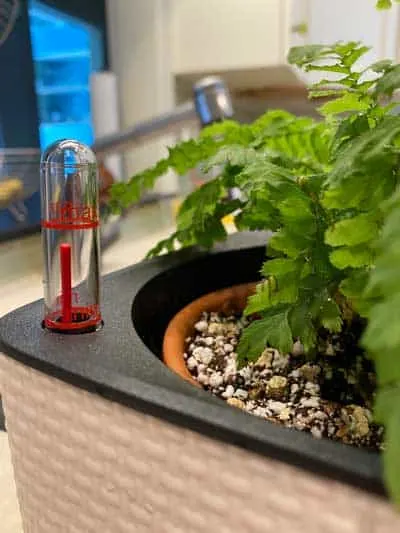
Tip #32: Is water just sitting on top of the soil surface when you water your plant and takes forever to soak in? You soil may be too compacted.
One quick way to remedy this is to take a chopstick from your Chinese carryout and use it to poke a few holes into the soil. This will help to aerate the pot and improve the drainage.
When you repot the plant though, consider Tip #9 and amend your potting mix!
Tip #33: BEWARE! Do you have a water softener in your home? Don’t use water out of your home water softening system for your plants because it is toxic!
These systems typically replace calcium and magnesium from tap water and exchange it for sodium. And sodium is toxic to plants!
So your options could include buying distilled water or collecting and using rainwater for your plants. Rainwater would be the best choice anyway!
Tip #34: Choose the right plant for the right space. You need to select your plant based off of the area that it will be growing in, not the other way around.
I had a friend that tried to grow a cactus in an area with no window. That didn’t work too well. Conversely, if you have a large super-sunny window, you won’t want to put a peace lily there because it will burn.
Learn about the light requirements of a plant before you place it in its growing location.
Tip #35: Do you have a windowless area and still want to grow plants?
There ARE plants that will grow in lower light, including areas with no windows! Check out this blog post that I wrote on plants to grow in windowless areas.
I grew a nice variety of plants in an old windowless office that I used to have at work and some of them even thrived.
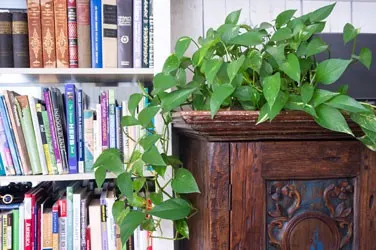
Tip #36: Be sure to grow your plants in pots that have drainage holes. This might seem very obvious, but you can’t imagine how many times I’ve had to remind people that you need drainage holes in pots.
I’m not saying it’s impossible to grow a plant in pots without drainage holes, but it will be too much of a risk if you’re not caring for it properly.
Tip #37: On a budget and still want plants? How about grow your own avocado plants after you’re done making guacamole? Here is a quick, illustrated tutorial that I found on how to grow an avocado from a pit.
Tip #38: Grow your own ginger for cooking! Did you know that you can easily grow your own ginger for cooking? It is super easy and I’ve done it multiple times!
You’ll be shocked on how much ginger you will harvest in less than a year. Check out my blog post on how I grow and preserve my own ginger. I also made a YouTube video showing my harvest!
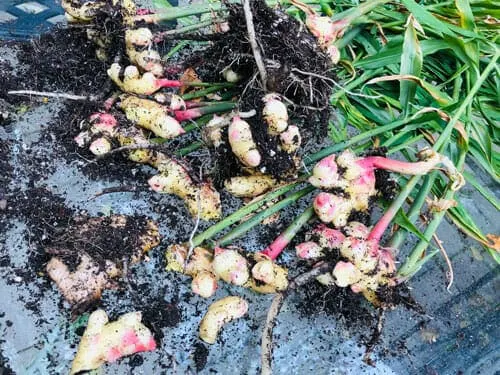
Tip #39: Did you break your ceramic or terra cotta pots? Why not use the broken pieces to cover the drainage holes in your pot? I save all my broken pots and use small pieces for this purpose.
Every time I repot, I place a piece of a pot shard to cover the drainage hole. Water will go through, while keeping the soil in place.
Tip #40: Time to repot and can’t get your plant out of it’s plastic nursery pot? Why not cut it off with scissors? It’s not worth risking damaging the plant by pulling too hard if it just won’t come.
Carefully take a pair of good scissors or pruners, and cut the plastic pot off carefully.
Tip #41: Time to repot and can’t get your plant out of its terra cotta or ceramic pot? Take a hammer to it!
Recently I repotted a prized Anthurium that I’ve had for over a dozen years. It was growing in a plain terra cotta pot. I didn’t want to damage the root system, so I simple took a hammer to it and safely removed the plant so I could repot it.
The plant was worth WAY more to me than an inexpensive terra cotta pot. After you take a hammer to it, you can save the broken pot and use them for pot shards to cover drainage holes as previously described. It’s fun and effective!
Tip #42: Don’t want to make a mess watering your hanging plants and getting water everywhere? Why not take them to the shower or bathtub with you and water them there?
You can even take a portable coat rack and place it in the shower and allow the hanging plants to drain for a bit before returning them to their growing location. Or even install a ceiling hook over the tub.
Tip #43: Don’t want to bother mixing fertilizer solution every time you water? Save some gallon plastic jugs, label them, and mix up a batch of fertilizer and store them somewhere handy.
Tip #44: Do you really find fertilizing annoying and you’d rather not bother with it at all? Although I use Osmocote mainly for my outdoor pots, you can use it for ANY plants.
Simply mix the small, dry spheres into your pots, or in the soil when you repot, and your plant will be good to go for months! It is a time-release fertilizer so your plant will be slowly fertilized over time each time you water.
Tip #45: Don’t throw away those eggshells! Eggshell water can be a great and free way to supplement your plant’s nutrient needs. Check out this great post I found on the benefits of eggshell water and how to make it right in your own kitchen.
Tip #46: Still waiting for that lonely pothos cutting to turn into a giant plant? Well, you’ll have to give it a little help. Fortunately, I made a YouTube video showing you exactly how I do this!
Tip #47: Do you have too many loose air plants and it has gotten really annoying to handle all of them and water them? I eventually got tired of managing my air plants, so I simply mounted most of them on a piece of grapevine!
You can use anything really. Grapevine, driftwood, etc. Check out my YouTube video showing exactly how I mounted my air plants. Be creative! It made it a lot easier to care for them.
Tip #48: Save your banana peels to make your own fertilizer! You can really reuse a lot from your kitchen! So why not make your own fertilizer and spare the landfill?
Check out my blog post on growing Queen of the Night (Epiphyllum oxypetalum) where I also have a section on how to dehydrate banana peels and use them as fertilizer.
Tip #49: Want to increase oxygen levels while you’re sleeping? Keep some Sansevieria (snake plants) in your bedroom. These plants use up carbon dioxide and give off oxygen during the night…which is the opposite of what most other plants do at night.
Not to mention, they tolerate low light.
Tip #50: Want to improve your indoor air quality? Did you know that NASA conducted research on the ability of various houseplants in removing indoor air pollutants?
Indoor air can be up to 10 times more polluted than outdoor air. Check out my blog post where I chose what I believe are the 9 easiest plants for air purification from that list of plants that NASA studied. Indoor air quality is a serious problem.
So load your house up with plants!

Tip #51: Struggling with low light conditions during the winter? There is nothing wrong with supplementing natural light with various grow lights, especially during the darker winter months.
T5 light fixtures are amazing overall grow lights for your plants. I’m not much of a fan of the purple LED lights that have become a craze everywhere. It’s not pleasing to my eye.
Tip #52: Want your vines to climb on your walls but don’t know how to support them? Try using Command hooks, or even clear fishing string, to train your plants against a wall!
I currently use the command hooks in my office at work to train my pothos. In an old office I used to be in, which was windowless, I used clear fishing string to train it against the walls. Have fun with it! Check out my blog post if you’re wondering how I grow Pothos.
Tip #53: Need to repot a cactus but don’t want to get pricked? Take some bubble wrap, or even newspaper, and wrap it around the cactus as you’re working with it so that you don’t prick your fingers.
Tip #54: Like the look of terra cotta pots but not a fan of water seeping through the terra cotta saucer and ruining your wooden furniture? The solution is simple! There are terra cotta saucers that are glazed in the interior. No more water seeping through!
Tip #55: Do you find it difficult to lift and move your large floor plants? There is a solution for that…plant caddies with wheels! I love using these for my larger floor plants when I need to move them. Save your back!
Tip #56: Don’t want to collect rainwater but still want to use it? I love moving my houseplants outside during a nice rain. When the rain is over, you can move them back indoors. Rainwater is wonderful for plants!
Tip #57: Short on ceiling space for hanging plants and have a skylight? Skylights usually have amazing light. Surround your skylight with hooks and hang away!
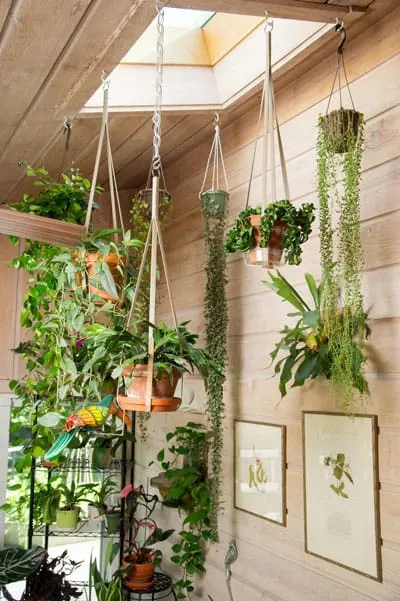
Tip #58: Disappointed with moss poles out on the market or can’t find any? Make one yourself! They are easy to make and better than anything you’ll fine. Check out my DIY guide to making your own moss pole!
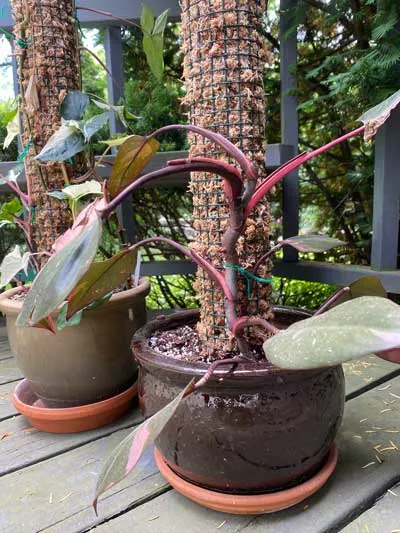
Tip #59: Did you just get a shipments of houseplants by mail and you’re not sure what to do with them? The answer may surprise you. You should do NOTHING for a while. Check out my blog post, Receiving Houseplants By Mail: Avoid These 5 Newbie Mistakes!
Tip #60: Use old drinking water to water your plants. Have you left your drinking water for too long on your night stand and don’t want to drink it anymore? Throw it in one of your plants or a watering can. No need to waste all that water for no reason!
Tip #61: Use a chopstick as a support stake. Do you have leftover chopsticks? No need to go buy stakes for your leaning plants. Chopsticks are great for smaller plants if they need some extra support to stand straight.
I hope you’ve enjoyed these houseplant hacks. Do you have any other houseplant care hacks that didn’t appear on my list? Comment below. I’d love to hear!

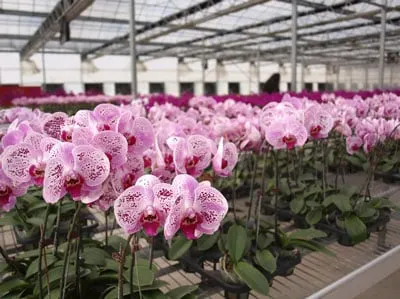
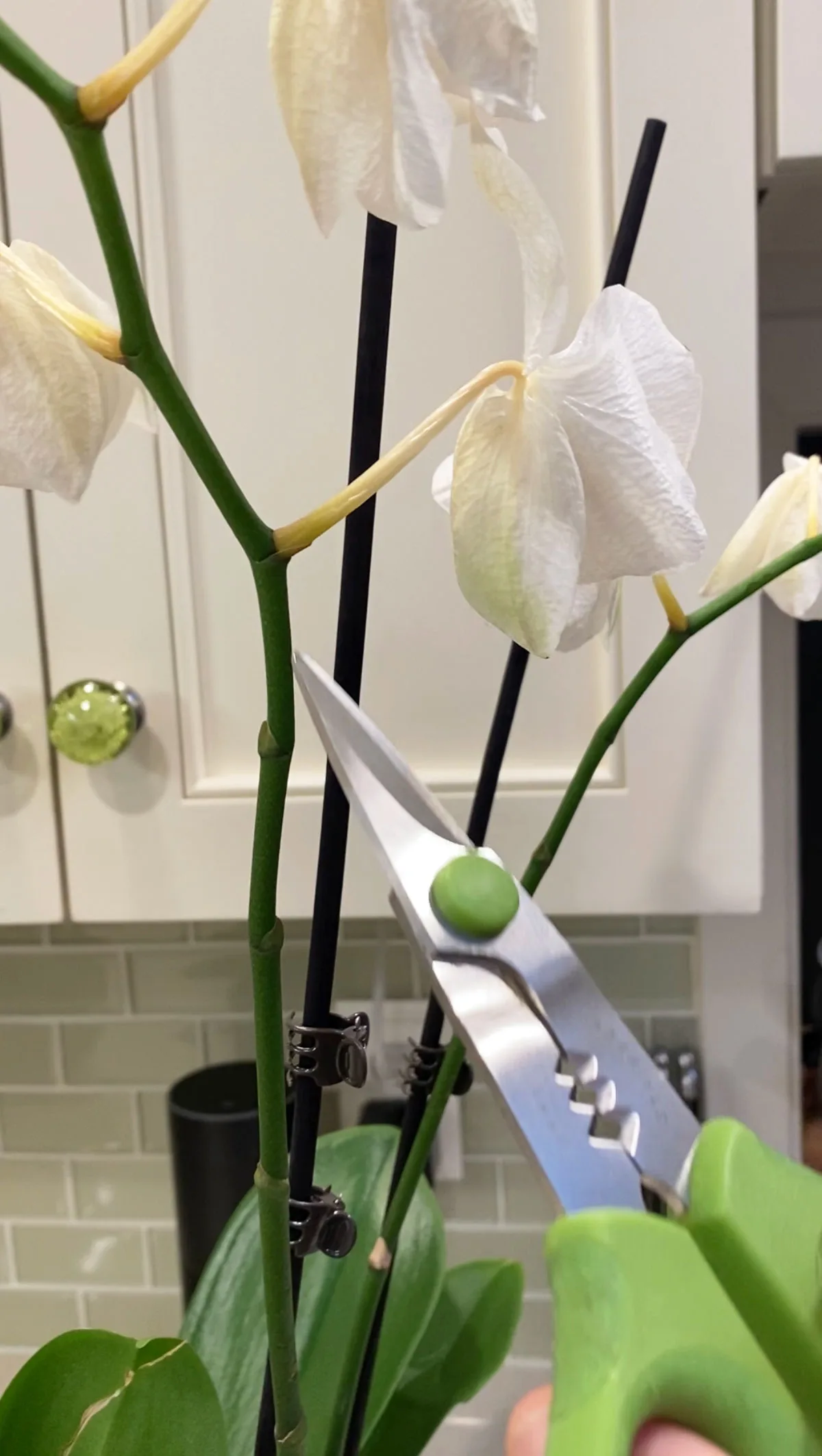
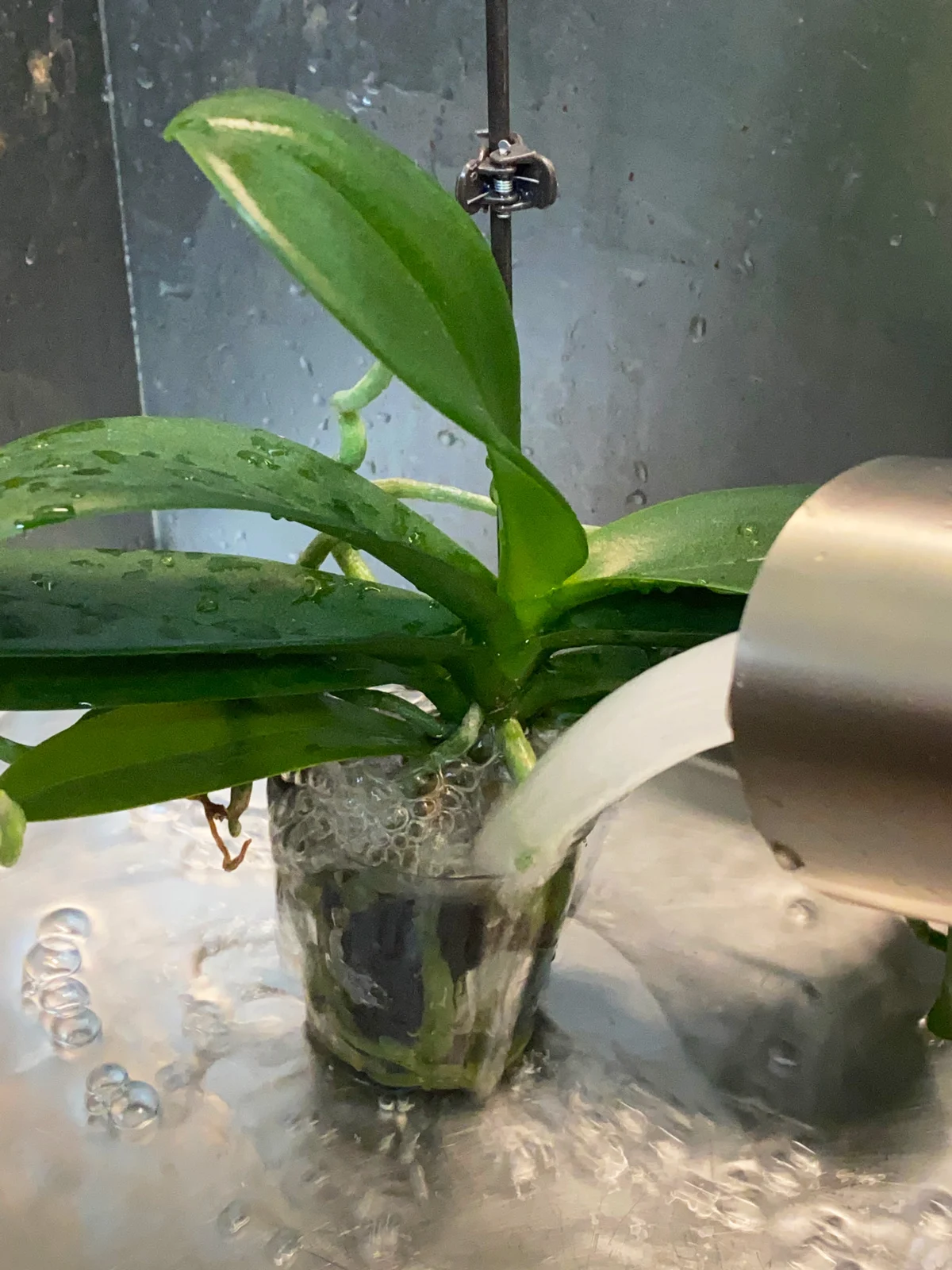
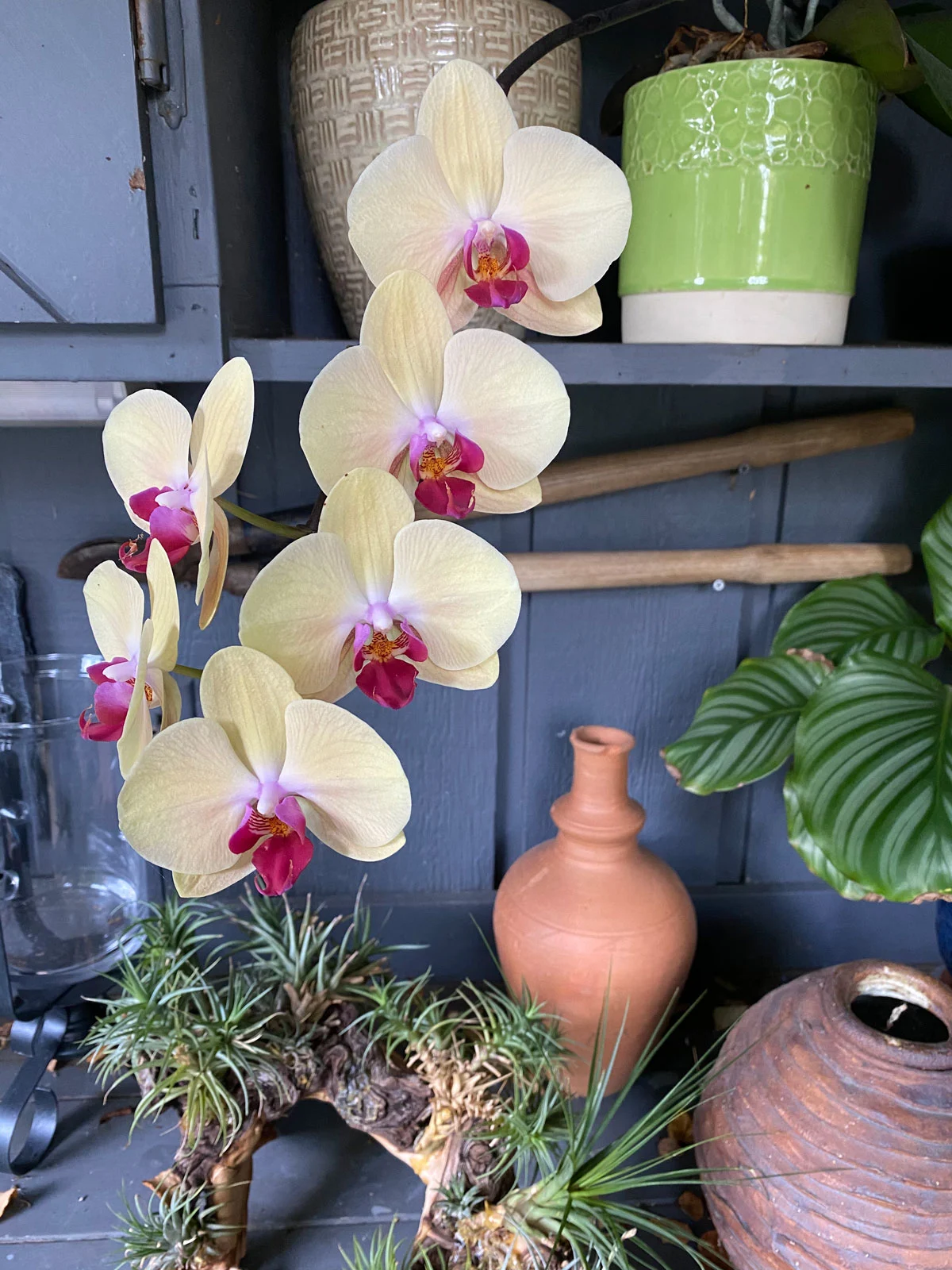
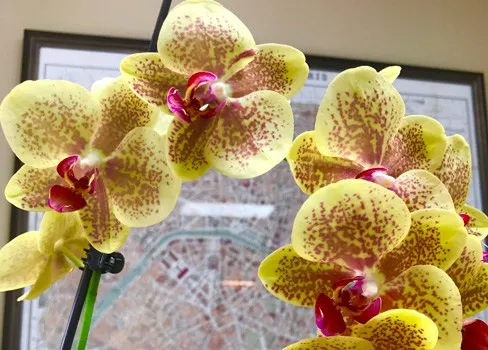
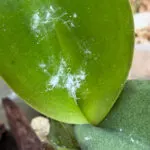
Plantora
Tuesday 11th of March 2025
This was such a fantastic read! I’ve been struggling with keeping my houseplants happy, and your advice on watering schedules helped. I appreciate the time and effort you put into this guide!
Raffaele Di Lallo
Tuesday 11th of March 2025
Glad you enjoyed the post!
James Perkins
Tuesday 10th of January 2023
Amazing information, wife loves plants, but i thought it was just a nice hobby...
Raffaele
Wednesday 11th of January 2023
Glad you enjoyed the post James!
Babs
Tuesday 4th of August 2020
My husband built my plant grow room from aquarium light fixtures that were a steal and we outfit them with t5 6500k ho bulbs and the light is perfect. It turns all my succulents to those beautiful colors you see pictures when you order them. It was done as a less expensive measure starting out and now as we expand, we expand with the aquarium fixtures.
Raffaele
Tuesday 4th of August 2020
That's a great idea and those are fantastic lights!
sey
Tuesday 2nd of July 2019
These tips were surprisingly helpful. This kind of list often only contains basic stuff but I actually learned something. Thanks!
rcdilallo@gmail.com
Wednesday 3rd of July 2019
Hi Sey. I'm glad you found the tips useful! I tried to include some less-than-obvious tips instead of just generic information :-) Thanks for taking the time to comment.
Cristie
Friday 15th of March 2019
Wow! What a simple yet informative comprehensive list! I love it! Thank you so much for taking all the time to compile this together for our houseplant community. Some of them I have never heard of! Thanks for the tips!
-Cristie Xylem Rising
rcdilallo@gmail.com
Saturday 16th of March 2019
Glad you enjoyed the list Cristie! And I see you have a website as well. I will check it out soon! Where are you based out of?